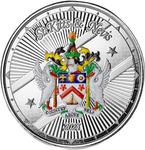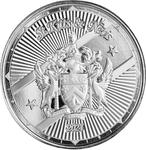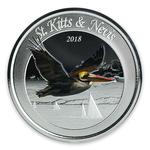Information about effigy: Coat of Arms of Saint Kitts and Nevis
Coat of Arms of Saint Kitts and Nevis
Coat of Arms of Saint Kitts and Nevis - Example/s on coins

Coat of Arms of Saint Kitts and Nevis in colour Saint Kitts and Nevis / Silver Ounce 2024 Coat of Arms The Coat of Arms of Saint Kitts and Nevis featured on the reverse (not obverse) of some bullion coins of the EC8 series in 2024, including in a full-colour version. |
Coat of Arms of Saint Kitts and Nevis - showing 2 of 2 coins
| Coin Name | Reverse | Obverse | Details |
|---|---|---|---|
| Silver Ounce 2024 Coat of Arms |  |
 |
Material: 0.999 Silver Mint: Scottsdale Mint Mintage: 25,500 |
| Gold Ounce 2024 Coat of Arms |  |
 |
Material: 0.9999 Gold Mint: Scottsdale Mint Mintage: 2,600 |
|
Coat of Arms of Saint Kitts and Nevis: Details
| Year | 1983 |
|---|---|
| Country | Saint Kitts and Nevis |


